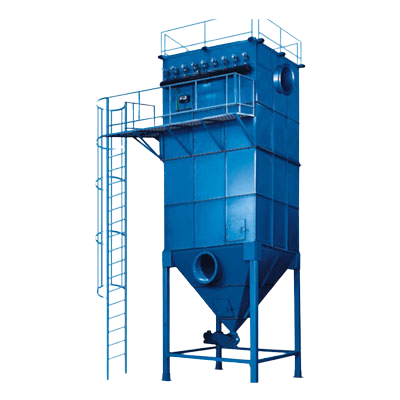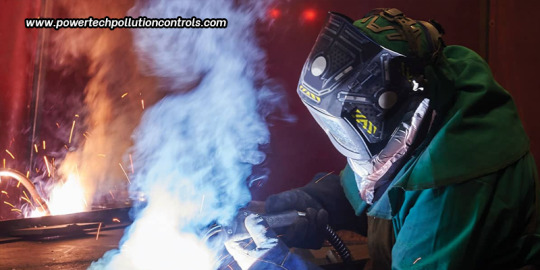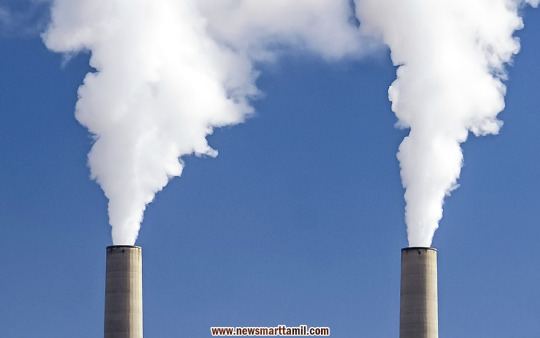#AirPollutionControl
Explore tagged Tumblr posts
Text
The Science of Nanoparticles: From Quantum Effects to Real-World Impact
Nanoparticles are tiny particles that range in size from 1 to 100 nanometers. These particles have unique properties that differ from their bulk counterparts, making them suitable for various applications. The synthesis of nanoparticles is a crucial step in harnessing their potential. There are several methods used for the synthesis of nanoparticles, including physical, chemical, and biological approaches.
Get More Insights on Nanoparticles https://www.patreon.com/posts/exploring-world-130167624

#Nanoparticles#EnvironmentalRemediation#WaterPurification#AirPollutionControl#CoherentMarketInsights
0 notes
Text

Industrial dust can harm productivity, health, and the environment. Acme Air Equipments’ Centralised Vacuum Cleaning System / Dust Collection System efficiently captures low-density particles, ensuring a clean and safe workspace. With compact design, noiseless operation, rugged build, and easy maintenance features like online filter cleaning, it’s the smart choice for modern industries. Trust Acme for reliable dust control solutions.
For more details, visit- https://www.acmeairequipments.com/product/dust-collection-system/
#acmeairequipment#DustCollectionSystem#IndustrialDustControl#VacuumCleaningSystem#CleanWorkplace#IndustrialSafety#AirPollutionControl#CentralisedVacuumSystem#DustFreeEnvironment
0 notes
Text
🌎 Earth Day 2025
"𝗙𝗼𝗿 𝘁𝗵𝗲 𝗘𝗮𝗿𝘁𝗵 𝘁𝗼 𝗯𝗿𝗲𝗮𝘁𝗵𝗲, 𝗶𝗻𝗱𝘂𝘀𝘁𝗿𝗶𝗲𝘀 𝗺𝘂𝘀𝘁 𝘀𝘁𝗮𝘆 𝗰𝗹𝗲𝗮𝗻!"
At Fumido, we’re committed to building a dust-free environment forever — because clean industries mean a cleaner planet. 🌱
Let’s celebrate this Earth Day by planting more trees and adopting cleaner technologies like dust collectors, industrial vacuum cleaners, and fume extractors that protect both people and the planet. 🌿💨
🌲 𝑇𝑟𝑒𝑒𝑠 𝑎𝑟𝑒 𝑡ℎ𝑒 𝑙𝑢𝑛𝑔𝑠 𝑜𝑓 𝑜𝑢𝑟 𝑝𝑙𝑎𝑛𝑒𝑡 - 𝑙𝑒𝑡’𝑠 𝑔𝑟𝑜𝑤 𝑚𝑜𝑟𝑒 𝑜𝑓 𝑡ℎ𝑒𝑚.
#Fumido#EarthDay2025#SustainableIndustry#DustFreeEnvironment#GreenManufacturing#AirPollutionControl#IndustrialCleanliness#CleanAir#SaveThePlanet#TreePlanting
0 notes
Text
Air Quality Monitoring Market to be Worth $11.3 Billion by 2032
Meticulous Research®—a leading global market research company, published a research report titled, ‘Air Quality Monitoring Market by Product Type, Sampling Method, and End User (Residential, Government & Public Utilities, Commercial End Users, and Industrial End Users) and Geography - Global Forecast to 2032.’
According to this latest publication from Meticulous Research®, the global air quality monitoring market is projected to reach $11.3 billion by 2032, at a CAGR of 6.6% from 2025 to 2032. The growth of this market is driven by the increasing availability of advanced IoT-enabled air quality monitoring systems, increasing demand for smart air quality monitoring solutions for reducing pollution, and stringent government regulations regarding industrial emissions. The growing industrialization in emerging economies and technological advancements in air quality monitoring systems are expected to offer significant growth opportunities for the stakeholders in the market.
The high cost of air quality monitoring systems due to technology complexity, equipment quality, data accuracy requirements, and regulatory standards may restrain the market's growth. Furthermore, the slow implementation of air pollution control reforms worldwide and technical limitations of air quality monitoring systems are expected to challenge the growth of the air quality monitoring market.
The global air quality monitoring market is segmented by product type (indoor air quality monitors and outdoor air quality monitors), sampling method (active monitoring, passive monitoring, intermittent monitoring, and other sampling methods [stack monitoring], end user (residential, government & public utilities, commercial end users (transportation & logistics, education, healthcare, shopping malls & retail stores, hospitality, airports, and other commercial end users [construction sites], industrial end users (automotive, pharmaceutical, oil & gas, chemicals, food & beverage, metal & mining, textile, agriculture, and other industrial end users [petrochemical & energy]). The study also evaluates industry competitors and analyzes the market at the regional and country levels.
Based on product type, the global air quality monitoring market is segmented into indoor and outdoor air quality monitors. In 2025, the indoor air quality monitors segment is expected to account for the larger share of the global air quality monitoring market. The large market share of this segment is attributed to the growing need to measure and monitor the quality of the air inside buildings, homes, offices, and other indoor spaces; increasing adoption of portable handheld devices, standalone units, and smart devices that can connect to a smartphone or home automation systems; and rising need to facilitate adequate ventilation, control the production of pollutants in an industrial manufacturing facility, and keep temperature & humidity level in a comfortable range.
However, the outdoor air quality monitors segment is projected to register the highest CAGR during the forecast period. The high growth of this segment is driven by the growing need to understand the environmental conditions and potential health risks for people living in a particular area; increasing adoption of outdoor air quality monitors to protect public health by providing early warnings about high levels of pollutants such as PM2.5, ozone, nitrogen dioxide, and sulfur dioxide; and increasing demand of outdoor air quality monitors for urban planning and infrastructure & industries to track their emissions and ensure compliance with environmental regulations.
Based on sampling method, the global air quality monitoring market is segmented into active monitoring, passive monitoring, intermittent monitoring, and other sampling methods. In 2025, the active monitoring segment is expected to account for the largest share of the global air quality monitoring market. The large market share of this segment is attributed to the growing use of a set of instruments and sensors that actively sample and measure air pollutants and environmental conditions in real-time or near real-time, the rising need for quick responses to changing air quality conditions, growing need to detect sudden spikes in pollution levels, providing early warning of potential air quality hazards such as wildfires, industrial accidents, or other environmental incidents, and effectiveness of pollution control measures and regulatory policies over the time.
Many active monitoring systems are used for regulatory compliance, ensuring that emissions from industrial facilities and transportation meet established air quality standards. If pollutant levels exceed regulatory limits, appropriate actions can be taken. This segment is projected to register the highest CAGR during the forecast period.
Based on end user, the global air quality monitoring market is segmented into residential, government & public utilities; commercial end users; and industrial end users. In 2025, the industrial end users segment is expected to account for the largest share of the global air quality monitoring market. The large market share of this segment is attributed to the growing need to identify pollution sources, assess the effectiveness of pollution control measures, and mitigate potential health and environmental risks; growing adoption of air quality monitoring for worker health & safety; increasing popularity of real-time air quality monitoring with automatic alert systems; and growing use of air quality monitoring data for R&D purposes. Analyzing emissions data can lead to the development of cleaner technologies, pollution control strategies, and more sustainable practices. Additionally, this segment is projected to register the highest CAGR during the forecast period.
Based on geography, the global air quality monitoring market is segmented into North America, Europe, Asia-Pacific, Latin America, and the Middle East & Africa. In 2025, North America is expected to account for the largest share of the global air quality monitoring market. North America’s large market share is attributed to the increased government funding for environmental sustainability and developing policies to reduce environmental pollution, increasing installations of environmental monitoring stations, and the increased adoption of environmental monitoring strategies by public and private companies across the region. In North America, technological advancements in sensor technologies, data analytics, and communication systems have made air quality monitoring systems more accurate, efficient, and cost-effective. The availability of portable and real-time monitoring devices, along with cloud-based data management and analysis platforms, has expanded air quality monitoring systems adoption in various sectors, including government agencies, research institutions, industries, and commercial establishments, supporting the market's growth.
However, Asia Pacific is projected to register the highest CAGR during the forecast period. The growth of this region is driven by the growing demand for air quality monitoring solutions due to the significant challenges posed by pollution and its impact on public health, ecosystems, and climate change, technological advancements in sensor technology, data analytics, and modeling techniques, increasing public awareness about the importance of air quality monitoring solutions, and the growing presence of well-established air quality monitoring solution providers. The Asia Pacific region is known for having some of the world's most polluted cities, largely attributed to rapid industrialization, urbanization, vehicle emissions, agricultural practices, and natural sources such as dust storms. Efforts to improve air quality monitoring in the Asia Pacific region are ongoing and involve cooperation among governments, international organizations, research institutions, and the private sector.
Key Players
The key players operating in the global air quality monitoring market are Thermo Fisher Scientific Inc. (U.S.), Emerson Electric Co. (U.S.), Siemens AG (Germany), Teledyne Technologies (U.S.), 3M COMPANY (U.S.), Merck KGaA (Germany) (a subsidiary of Merck Group), Honeywell International Inc. (U.S.), General Electric Company (U.S.), HORIBA, Ltd. (Japan), Tish Environmental, Inc. (U.S.), Testo India Pvt. Ltd. (India), Spectris plc (U.K.), Agilent Technologies, Inc. (U.S.), Chemtrols Industries Pvt. Ltd. (India), and Vasthi Instruments (India).
Download Sample Report Here @ https://www.meticulousresearch.com/download-sample-report/cp_id=5646
Key questions answered in the report:
Which are the high-growth market segments in terms of product type, sampling method, and end user?
What is the historical market size for air quality monitoring solutions across the globe?
What are the market forecasts and estimates for 2025–2032?
What are the major drivers, restraints, opportunities, and challenges in the global air quality monitoring market?
Who are the major players in the global air quality monitoring market, and what are their market shares?
How is the competitive landscape?
What are the recent developments in the global air quality monitoring market?
What are the different strategies adopted by the major players in the market?
What are the geographic trends and high-growth countries?
Who are the local emerging players in the global air quality monitoring market, and how do they compete with other players?
ContacUs: Meticulous Research® Email- [email protected] Contact Sales- +1-646-781-8004 Connect with us on LinkedIn- https://www.linkedin.com/company/meticulous-research
#AirQualityMonitoring#MarketGrowth#EnvironmentalTechnology#MarketForecast2032#AirPollutionControl#GlobalMarketInsights#SmartMonitoringSolutions#EnvironmentalSustainability#AirQualityMarket
0 notes
Text
Improve Dubai Air Quality with Kitchen Duct Cleaning by Al Waha
Regular kitchen duct cleaning Dubai significantly enhances air quality in Dubai homes by removing grease, dust, and pollutants. Al Waha Hygiene ensures that your ducts are thoroughly cleaned, preventing the buildup of harmful substances that can affect respiratory health. This leads to fresher, healthier air and a cleaner living environment. Book now (+971 56 695 2225) for Kitchen Duct Cleaning Near Me.
#AlWahaHygiene#KitchenDuctCleaning#AirQualityDubai#KitchenDuctCleaningDubai#DuctCleaningDubai#HealthyHome#CleanAirDubai#HygieneServices#DubaiHomeCare#AirPollutionControl#KitchenMaintenance
0 notes
Text
Top Air Pollution Control Equipment Manufacturers in India
Air pollution is one of the major concerns in India due to rapid industrialization and urbanization. To combat this growing issue, industries are turning to Air Pollution Control Equipment (APCE) to reduce harmful emissions. These technologies ensure compliance with environmental standards and contribute to a healthier atmosphere. In this post, we will explore the top Air Pollution Control Equipment Manufacturers in India offering innovative solutions.
Top Air Pollution Control Equipment Manufacturers in India
Par Boiler Limited (www.parboiler.com) Par Boiler is a pioneer in providing air pollution control solutions. They offer a wide range of systems, including bag filters, scrubbers, and electrostatic precipitators (ESPs). Known for energy-efficient and sustainable technologies, Par Boiler serves diverse industries like power, cement, steel, and chemicals.
BHEL (Bharat Heavy Electricals Limited) BHEL is a government-owned enterprise with decades of expertise in industrial equipment manufacturing. They design and deliver efficient electrostatic precipitators and flue gas desulfurization (FGD) systems. BHEL's focus on innovation and reliability makes it a top choice for industries.
GEA India GEA Group specializes in air filtration and purification systems, offering advanced solutions like wet scrubbers, cyclones, and air filtration systems. Their technology is widely used in food processing, pharmaceuticals, and chemical sectors.
KC Cottrell India KC Cottrell is renowned for its Electrostatic Precipitators (ESPs) and dust collection systems. With global experience, KC Cottrell provides innovative solutions for reducing particulate emissions in industries.
A.T.E. Group A.T.E. Group offers a comprehensive range of air pollution control systems, including bag filters, scrubbers, and VOC control systems. Their eco-friendly equipment ensures compliance with emission standards while enhancing operational efficiency.
Lodha Environmental Solutions Specializing in scrubbers, bag filters, and fume extraction systems, Lodha Environmental Solutions delivers tailored air pollution control technologies for the steel, cement, and pharmaceutical industries.
Key Air Pollution Control Equipment and Their Applications
Electrostatic Precipitators (ESPs) Used to remove fine dust particles from industrial emissions. Commonly used in cement, steel, and power plants.
Bag Filters Bag filters capture particulate matter effectively. They are ideal for cement kilns, food processing, and chemical industries.
Scrubbers Scrubbers help neutralize gaseous pollutants by using liquid or chemical solutions. They are commonly used in chemical and power industries.
Cyclone Separators Cyclones use centrifugal force to separate dust particles from gas streams, widely used in wood, pulp, and agriculture industries.
Flue Gas Desulfurization (FGD) Systems FGD systems reduce sulfur dioxide (SO₂) emissions and are critical in coal-based power plants.
Benefits of Air Pollution Control Equipment
Compliance with Environmental Standards: Ensures adherence to emission norms.
Improved Air Quality: Reduces harmful pollutants, protecting human health.
Enhanced Efficiency: Minimizes operational disruptions caused by pollution.
Sustainability: Supports a cleaner and greener environment.
India's top air pollution control equipment manufacturers play a significant role in tackling industrial emissions. With advanced solutions like ESPs, scrubbers, and bag filters, these companies ensure industries meet environmental standards while promoting sustainability. Investing in air pollution control systems not only benefits businesses but also contributes to a cleaner and healthier future.
#AirPollutionControl#CleanAirSolutions#EnvironmentalEquipment#PollutionControlManufacturers#IndustrialSolutions#SustainableIndustries#AirQualityManagement#AirPollutionIndia#Thermax#BHEL#AirFiltration#PollutionControlSystems#GreenTechnology#IndustrialEquipment#CleanerAir#TopManufacturersIndia#Sustainability#EnvironmentalCompliance#IndustrialEmissionControl#AirPollutionSolutions
0 notes
Text
Best Bag Filter Systems Manufacturer in Maharashtra, India | Ph Engicon | 093706 85147
Best Bag Filter Systems Manufacturer in Maharashtra, India. Our advanced systems ensure a cleaner, safer work environment, enhancing productivity and compliance.Heavy Fabrication.











#phengicon#maharashtramanufacturing#industrialequipment#cleanairsolutions#engineeringexcellence#heavyfabrication#bag filter systems#industrialfiltration#manufacturer in maharashtra#india#AirFiltration#IndustrialAirQuality#PollutionControl#MaharashtraManufacturers#DustCollection#AirPollutionControl#FiltrationExperts#CleanAirTech#EngineeringSolutions#IndustrialEquipment
1 note
·
View note
Text
Portable Air Sampler 6kg

Labmate portable air sampler collects air at 100L/min with a sampling range of 0.01 to 9.0 m³ and a flow velocity of 0.38 m/s. It features programmable settings for automatic sampling time control. Weighing 4.8 kg (net) and 8.5 kg (gross), it efficiently captures and measures airborne microorganisms in various environments.
#PortableAirSampler#AirQualityMonitoring#CleanAir#AirPollutionControl#EnvironmentalHealth#AirSampling#BreatheEasy#HealthyAir
0 notes
Text

DELHI AIR POLLUTION
The air quality in Delhi has reached alarming levels, posing a serious threat to the health of its residents, especially children.
To protect your children from the harmful indoor air, here are some tips you can follow:
https://etalkindia.com/talk/showthread.php?28570-DELHI-AIR-POLLUTION-tips-to-protect-your-child
#DelhiAirQuality#DelhiPollution#DelhiSmog#DelhiChokes#delhiairemergency#AQI#alarming#airpollution#airpollutioncontrol#life#health#human#lifematters#trending#viral#child#safe#eti#etalkindia#news
0 notes
Text
The Complex Makeup Of Welding Fumes

The fundamental metal fabrication method of welding is essential for building everything from complex machinery to skyscrapers. Behind the brilliant sparks and the excellent artistry, however, comes a less obvious but no less significant component of welding – welding fumes, which are a complicated mixture of small particles and gases.
The centre of the welding arc, where metals and other materials are vapourised at high temperatures, is where welding fumes are born. The crucible in which this change takes place is the welding arc, a brilliant discharge of electricity between the welding electrode and the base metal. Welding fumes are a distinctive mixture of substances created as a result of the interaction and vapourization of the elements in the welding arc, metal oxides, gases, and particulate particles being the three main components.
Metal Oxides
The two main sources of metal oxides in welding fumes are base metal and welding electrode. Metal oxides are produced in part by the base metal being welded. Iron, manganese, and chromium are just a few of the components that can be present in the metals themselves and can be oxidized during welding. Specific components may also be present in the welding electrode or filler material used during the welding process. Hence, additional metal oxides are added to the fume composition when the electrode melts and mixes with the base metal. The metal oxide content in welding fumes varies greatly and is dependent on the particular materials used. Some of the most frequently occurring components in welding fume metal oxides are hexavalent chromium, nickel, manganese, and iron.
Gases
Several chemical reactions that take place during the welding process lead to the creation of gases in welding fumes. The breakdown of the welding electrode coating and interactions with the base metal are the main components of these processes. Several gases can be found in welding fumes, but the following are some of the most prevalent ones –
Carbon Dioxide (CO2): Carbon dioxide, which is created when carbon-containing electrode coatings burn, can affect the overall makeup of welding fumes.
Carbon Monoxide (CO): Another combustion byproduct produced during welding is carbon monoxide, which is dangerous when ingested in high doses.
Ozone (O3): Ozone is produced when airborne oxygen molecules come into contact with ultraviolet radiation from a welding arc.
Nitrogen Oxides (NOx): High-temperature welding procedures can produce nitrogen oxides, well-known respiratory irritants and air pollutants.
Hydrogen Fluoride: When welding materials containing fluorine compounds, hydrogen fluoride can be released.
Particulate Matter
Fine solid particles and liquid droplets make up the particulate matter in welding fumes. The content and size of these particles can differ. Particularly concerning is the size of the particulate debris in welding fumes. When inhaled, fine particles, often referred to as respirable particles, are small enough to reach the deepest parts of the lungs, and cause health hazards. This is why employee health and safety are of high concern because breathing in these particles can cause a variety of respiratory problems.
The Diverse Mix of Metals
The particular metals used in the welding process help to further categorize welding emissions. Depending on the kind of welding being done, these metals can have different compositions. The following are some typical welding techniques and the metals that go along with them.
Shielded Metal Arc Welding (SMAW), which entails using an electrode that has been coated with a variety of materials, such as metal oxides and minerals.
Gas Metal Arc Welding (GMAW), which uses a consumable wire electrode, often made of a metal alloy.
Gas Tungsten Arc Welding (GTAW), which uses an inert tungsten electrode.
Flux-Cored Arc Welding (FCAW), which uses a continuously fed consumable tubular electrode with a flux core.
It is essential to comprehend the chemical makeup of welding fumes because it provides insight into the potential health risks they may provide. These risks can expose welders and anyone working nearby to welding activities, which may result in a variety of acute and long-term health impacts. The long-term effects of welding fume exposure range from eye and throat irritation to the emergence of respiratory conditions and, in rare circumstances, serious neurological abnormalities. Understanding the composition of welding fumes is a crucial element in creating a safer workplace for everyone in an era where occupational health and safety are of utmost importance. And it is always preferable to stay safe, and keep your staff safe too, regardless of the metals you use or the welding process you employ. This is why it is recommended to install an effective fume extractor in your premises that can remove all dangerous toxins from the area. Getting in touch with genuine welding fume extractor manufacturers like Powertech Pollution Controls can help you get your hands on the finest fume extractor – the Fumekiller, which has emerged as a guardian of health, safety, and effectiveness in a world where fumes can have detrimental effects on the health.
#AirPollutionController#FumeExtractor#FumeExtractorIndia#PowertechPollutionControls#WeldingFumeExtractor#WeldingFumeExtractorIndia
0 notes
Text
🌬 Air Filtration Market: $4.2B → $9.8B by 2034
Anti-Microbial Air Filtration Systems Market is revolutionizing air purification, ensuring safer and healthier environments in homes, hospitals, offices, and industrial facilities. With rising concerns over airborne pathogens, allergens, and pollutants, advanced filtration technologies are now integrating antimicrobial coatings, HEPA filters, UV-C light, and nanotechnology to combat harmful microorganisms effectively.
To Request Sample Report: https://www.globalinsightservices.com/request-sample/?id=GIS10839 &utm_source=SnehaPatil&utm_medium=Article
From healthcare settings preventing hospital-acquired infections (HAIs) to commercial buildings enhancing indoor air quality (IAQ), demand for these smart air filtration systems is soaring. The COVID-19 pandemic accelerated innovation, leading to filters that not only trap but actively neutralize viruses, bacteria, and mold spores. Industries such as pharmaceuticals, food processing, and data centers are also adopting antimicrobial air filtration to maintain sterility and operational efficiency.
As governments enforce stricter air quality regulations, businesses and households are prioritizing sustainable, energy-efficient, and AI-powered air purification solutions. The future of air filtration lies in self-cleaning filters, IoT-enabled air monitoring, and biodegradable antimicrobial coatings, paving the way for a cleaner, healthier planet. 🌱✨
#AirPurification #CleanAir #AntiMicrobialTech #IndoorAirQuality #AirFiltration #HEPAFilters #SmartAirFilters #UVCAirPurification #SustainableLiving #HealthTech #BreatheEasy #GreenTechnology #AirbornePathogens #SmartHomes #IAQ #COVID19Safety #HygieneFirst #AirPollutionControl #HealthyLiving #EcoFriendlyTech #HospitalSafety #FiltrationTechnology #NanoFilters #BioAirTech #AntiviralFilters #FutureOfAirQuality #WorkplaceSafety #InnovativeTech #EcoSmartSolutions #PublicHealth #SmartBuildings
0 notes
Text

𝗞𝗲𝗲𝗽 𝗬𝗼𝘂𝗿 𝗔𝗶𝗿 𝗖𝗹𝗲𝗮𝗻, 𝗦𝘁𝗮𝘆 𝗣𝗿𝗼𝘁𝗲𝗰𝘁𝗲𝗱!
Ensure a healthier workspace with FUMIDO’s Fume Extractor (Ezvent Series) - the ideal solution for removing hazardous fumes from welding and other industrial processes.
Key benefits: ✅ Efficient fume capture for a safer work environment ✅ Flexible arm for precise extraction ✅ Durable, portable, and easy to maintain
𝐵𝑟𝑒𝑎𝑡ℎ𝑒 𝑒𝑎𝑠𝑦 𝑎𝑛𝑑 𝑤𝑜𝑟𝑘 𝑠𝑎𝑓𝑒𝑙𝑦! 🏭
Learn more: https://tinyurl.com/fumido-ezventseries
0 notes
Video
Environmental regulations 🌎: North American countries, especially the United States and Canada, are strengthening the regulation of nitrogen oxide (NOx) emissions and promoting the application of denitrification catalyst technology to meet stricter environmental standards. Technological Innovation 🔬: Many research institutions and companies are developing new denitrification catalysts to improve removal efficiency and reduce production and use costs to meet the growing demand for environmental protection. Market Demand 📊: With the increasing focus on clean air and sustainable development, the demand for denitrification catalysts in the North American market continues to rise, attracting more investment and technological innovation. Success Stories 🏭: After implementing denitrification catalyst technology, multiple industrial facilities and power plants have significantly reduced NOx emissions, becoming a successful model in the industry. Policy support 🏛️: The North American government has introduced a series of incentive policies to encourage companies to adopt denitrification catalyst technology to support the transition to a green economy and clean energy. #scrcatalyst #catalyst #Filtration #PelletizingPlant #Metallurgicalindustry #AirPollutionControl #CleanAir #Innovation #decarbonisation #fluegastreatment
0 notes
Text
Who else likes to take there breaks in a warm car!

#carhartt#bluecollarworkers#bluecollarnation#bluecollarbrotherhood#weldernation#welders#airpollutioncontrol
18 notes
·
View notes
Text
Air pollution in Tamil

Link: https://bit.ly/NST-AirpollutioninTamil
#airpollution#pollutionfreeair#pollutionair#airtrafficpollution#beatairpollution#airpollutionawareness#airpollutioncontrol#indoorairpollution#stopairpollution
0 notes
Text
Unlock the power of advanced desulphurization boilers in Ahmedabad, tailored for maximum efficiency and minimal emissions. Our innovative technology ensures compliance with environmental regulations while providing cost-effective energy solutions for industrial and commercial use. Benefit from high-performance boilers that deliver consistent, eco-friendly energy with reduced maintenance needs. Enhance your sustainability efforts with our top-tier desulphurization boilers, designed to meet the highest standards of safety and efficiency. Contact us today to discover how our cutting-edge solutions can revolutionize your energy systems and support your commitment to a greener future.
#DesulphurisationBoiler#AhmedabadIndustry#GreenTechnology#IndustrialInnovation#AirPollutionControl#SustainableSolutions#EnvironmentallyFriendly#IndustrialEfficiency#CleanAirInitiative#EcoFriendlyTech#IndustrialSafety#EnergyEfficiency#PollutionControl#AhmedabadTechnology#IndustrialEquipment#SustainableIndustry#TechInAhmedabad#IndustrialEngineering#CleanEnergy#GreenIndustry#EnvironmentalProtection#IndustryLeaders#AhmedabadBusinesses#EcoSolutions
0 notes